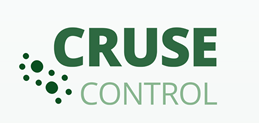Tools
PATIENT-RELATED OUTCOME MEASURES (PROMS)
PROMS are tools to measure and assess urticaria. These questionnaires may be useful to document urticaria activity and patient’s symptom control and quality of life at initial presentation and changes in response to treatment.
Table of Contents
Disease Activity
Urticaria Activity Score (UAS) & Angioedema Activity Score (AAS)

There are two tools to measure urticaria activity:
1. Urticaria Activity Score (UAS), used to assess the number of wheals (ranging from 0: none to 3: >50 wheals) and intensity of itch (ranging from 0: none to 3: severe); and
2. Angioedema Activity Score (AAS), used to assess and monitor disease activity in adult patients with predominant angioedema (with or without wheals).
Due to the unpredictability of wheals and itching, it is recommended that UAS should be done for 7 consecutive days to compensate for fluctuations that commonly occur in disease activity. This score is summed over 7 days before the medical visit, giving the UAS7 score (0–42 points).
AAS is a five-question tool with four answer options for each of the 5 items ranging from 0 (none) to 3 (severe); the range for cumulative daily AAS score is 0–15, the weekly AAS (AAS7) is 0–105, and monthly AAS (AAS28) is 0–420, where a higher value indicates a higher level of angioedema activity/severity. The main question is whether the angioedema has occurred in the last 24 hours. If the answer is yes, five additional questions are asked about “severity of physical discomfort caused by angioedema”, “ability to perform daily activities during the presence of angioedema”, “cosmetic disfigurement caused by angioedema” and” global assessment of impairment, and severity caused by angioedema”, which refer to the 8-hour period after the onset of angioedema.
Symptoms Control
Urticaria Control Test (UCT) & Angioedema Control Test (AECT)
Both Urticaria Control Test (UCT) & Angioedema Control Test (AECT) were developed specifically to assess the control status and therapeutic response.
UCT aims to determine the level of disease control in all forms of chronic urticaria (CU): CSU (with or without angioedema), CIndU, and combinations of both subtypes. It is a 4-item self-report retrospective questionnaire with a recall period of four weeks. Five answer options for each of the 4 items that are scored from 0 to 4 points; the range of summary score is 0–16, where a higher value indicates a higher level of urticaria control, a cut off of 12 is used to identify patients with “well-controlled,” and “poorly controlled” (< 12 points) urticaria.
AECT aims to measure the level of disease control from the perspective of patients with predominant angioedema (with or without wheals). It is a 4-item self-report retrospective questionnaire with a recall period of 4 weeks (AECT-4 weeks) or 3 months (AECT-3 months). Five answer options for each of the 4 items that are scored from 0 to 4 points; the range of summary score is 0–16, where a higher value indicates a higher level of angioedema control, a cut off of 10 is used to identify patients with “well-controlled,” and “poorly controlled” (< 10 points) angioedema.
UCT Video (English)
UCT Video (Deutsch)
UCT Video ( German/Deutsch)
Quality of Life
Chronic Urticaria Quality of Life Questionnaire (CUQ2oL) & Angioedema Quality of Life Questionnaire (AEQoL)
The CU-Q2oL was explicitly developed to assess the impact of CU on the quality of life in patients. It is a 23-item self-administered questionnaire covering the previous 2 weeks. The items are divided into six domains: Pruritus (2 items), edema (2 items), impact on daily activities (6 items), impact on sleep (5 items), limitations (3 items), and physical appearance (5 items), according to the validation study of the original version. A five-point Likert scale is used to assess the intensity of each item separately (ranging from 0: “nothing” to 5: “very much”). For each of the six dimensions, a score is calculated, and then a total index for all dimensions. The minimum total score is 23. Higher values reflect greater impairment of the symptom-specific health-related QoL.
The AEQoL is an instrument for the assessment of QoL impairment in patients with predominant angioedema (with or without wheals): The instrument includes 17 items that cover 4 domains related to the impact of angioedema on functioning, fatigue/mood, fear/shame, and food. Each item has 5 answer options. The total score is transformed into a linear scale from 0 to 100, with higher values reflecting greater impairment of the symptom-specific health-related QoL
CRUSE App

What is the CRUSE® app?
CRUSE® stands for ChRonic Urticaria Self Evaluation
The CRUSE® advantage for patients and physicians
- CRUSE® enables patients to fill out their Patient Reported Outcome Measure (PROMs) daily on their smart device
- CRUSE® reminds patients daily to monitor their quality of life through push notification
- CRUSE® allows patients to send a report of their PROM scores to their treating physician via Email, QR, WhatsApp or other communication paths
- CRUSE® promotes continued monitoring and documentation of CSU disease activity, impact and control that is needed for patients to receive optimal treatment
